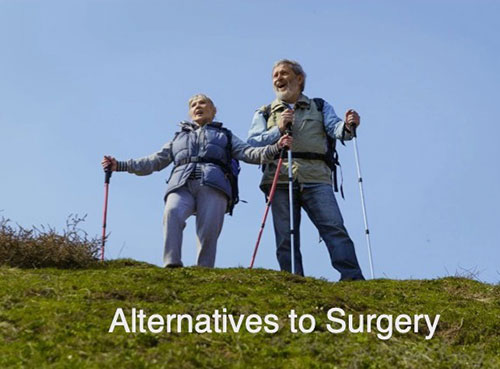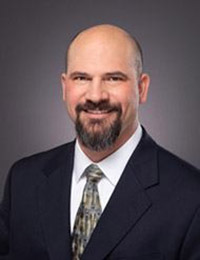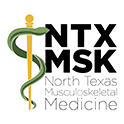Arthritis
Osteoarthritis is the most prevalent form of degenerative joint disease and source of disability among adults in the US, affecting approximately 23% of the adult population. The condition can occur in any joint, but most often affects the hands and weight-bearing joints, such as the knee, hip, and facet of the spine.
As we age, chronic injuries and normal wear and tear cause the articular cartilage that cushions the joint to wear down. Friction from bones rubbing against each other causes pain and inflammation, in turn leading to further degeneration of tissue. Articular cartilage covering the bones has a limited capacity to repair that reduces as we age. Without treatment, deterioration will progress.
Treatment Options

Platelet Rich Plasma Therapy condenses the many types of cells contained in the patient's blood to inject directly into damaged tissue. Platelet cells contain growth factors, such as alpha-granules, and tissue building proteins central to tissue repair. They also stimulate release of localized stem cells. By condensing platelet cells, their healing capacity is magnified to greatly enhance the cellular environment to accelerate and enhance the healing process.
Bone Marrow Aspirate Concentrate (BMAC), commonly known as Stem Cell Therapy uses mesenchymal stem cells derived from the patient’s own tissue, generally from bone marrow or adipose (fat) tissue. These cells have the capacity to differentiate into various cell types that compose the joint- cartilage, tendon, muscle, and bones. Through a process called "signaling," their key role is to direct other cells through the healing process. Arthritis can overwhelm the body's ability to regenerate tissue by depleting localized stem cells. Harvested cells are injected directly into damaged tissue to supply what the body needs for more effective healing.
Osteopathic Manipulative Medicine focuses on improving joint restriction and misalignment. When bones in the joint do not fit together as designed, several things happen. Bones can rub together causing irritation and subsequent inflammation. Structural dysfunction can also cause strain on surrounding ligaments and tendons, creating further damage, pain, and inflammation. Osteopathic manipulation helps to restore the structural integrity of the joint, allowing it to function naturally and effectively. Osteopathic Manipulation will release muscle tension around the affected joint and improve range of motion. OMT will also help to ensure function of related areas to more evenly distribute movement and loading on the joints.
Benefits of Regenerative Medicine
Natural Healing:
Regenerative Medicine treatments harness the body's innate healing mechanisms, promoting long-term recovery rather than temporary symptom relief.
Enhanced Tissue Repair:
Regenerative Medicine aims to repair and regenerate damaged tissues, potentially restoring function and reducing the need for more invasive treatments.
Reduced Risk of Side Effects:
Unlike corticosteroids, regenerative therapies generally have fewer and less severe side effects, as they use natural substances from the patient's own body.
Regenerative procedures are designed to help reduce knee pain and improve function with precise highly specific image-guided medical procedures.
Stem Cell Therapy
To determine if Regenerative Orthopedics will be helpful for you, please tell us about your condition.
Traditional Treatment vs Regenerative Orthopedic Procedures
Traditional treatment for arthritis has focused on treating the inflammation and pain associated with this condition. Although pain relievers can make you feel better, they do not change the course of the disease. Some treatments can actually make your condition worse. Cortisone will reduce inflammation, but in turn inhibits healing and further damages tissue. Surgery, on the other hand, ignores the body's ability to heal from within and removes the tissue itself, causing lengthy rehabilitation and often poor results.
Orthobiologic procedures treat the root cause of your pain using cells from your own body to provide long lasting results. The focus is regeneration of cartilage cells to heal from within as your body does naturally, only with a little help from a concentration of your cells. Research showing how the body actually heals on a molecular level has allowed physicians to develop more effective ways to treat arthritis. Regenerative Orthopedics is radically changing the way musculoskeletal conditions are treated, providing cures for people who have been living — until now — with few treatment options. Read more about Arthritis and PRP
Understanding the Risks of High-Dose Corticosteroid Injections
The management of pain and inflammation is a critical aspect of patient care in musculoskeletal medicine. High-dose corticosteroid injections have been a mainstay treatment for various conditions such as arthritis, tendonitis, and bursitis. However, while these injections can provide rapid relief, they are not without significant risks. Learn more about the negative effects of cortisone in Dr. Minotti's blog.
Corticosteroid injections work by reducing inflammation, thereby alleviating pain. However, the use of high-dose corticosteroids comes with several potential adverse effects:
- Joint and Tissue Damage: Repeated corticosteroid injections can lead to the weakening of tendons, cartilage, and bone. This can result in joint instability and an increased risk of tendon ruptures.
- Osteoporosis: High doses of corticosteroids can accelerate bone loss, increasing the risk of fractures and osteoporosis.
- Infection Risk: Corticosteroid Injections can suppress the immune system, potentially leading to infections such as septic arthritis.
- Endocrine Disruption: Corticosteroids can interfere with the normal function of the adrenal glands, potentially causing hormonal imbalances and conditions such as Cushing's syndrome.
- Short-Term Relief: While corticosteroids can provide rapid pain relief, this effect is often temporary, necessitating repeated injections and increasing the risk of cumulative damage.
Medical research focusing on how our body actually heals on a cellular level is providing new options for treatment of osteoarthritis.
Leader in Orthobiologic Treatment for Musculoskeletal Conditions

Dr. Minotti is specialty trained in Neuromusculoskeletal Medicine by the American Board of Neuromusculoskeletal Medicine with advanced training in Regenerative Medicine. His primary focus is Regenerative Orthopedics, nonsurgical procedures designed to accelerate regeneration of cells in healing of acute and chronic musculoskeletal injuries. Founder of North Texas Musculoskeletal Medicine in Southlake TX, Dr. Minotti is a pioneer in the field of regenerative medicine.
He believes that Regenerative Orthopedic procedures such as Platelet Rich Plasma (PRP) and BMAC, commonly known as Stem Cell Therapy are a new frontier in medicine, offering treatments that effectively bridge the gap between medications that mask pain and invasive surgery. As scientists learn more about the physiology of how our bodies heal, healthcare is able to use this research to find new and better treatments for musculoskeletal conditions.
Many scientists believe the concept of intrinsic healing, or healing through the body's natural process is a new frontier. Medicine is changing. The wonders of the human body and its ability to balance and heal itself are at the center of this medical renaissance.
We Can Help
To learn more about what we can do to help you, please call our office at 817-416-0970. We will thoroughly diagnose your condition and present you with treatment options. From there we will guide you along your road to recovery.
Renaissance means rebirth or regeneration. Every few generations medicine takes a major turn. We’re at one of those junctures now with regenerative medicine — where healing is triggered from within the human body. It’s bringing a whole new universe to how physicians provide care. It’s a whole new realm of healing. --Mayo Clinic Center for Regenerative Medicine
